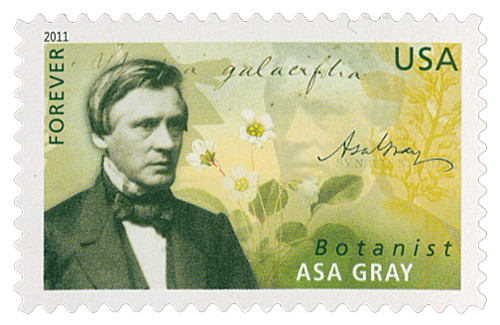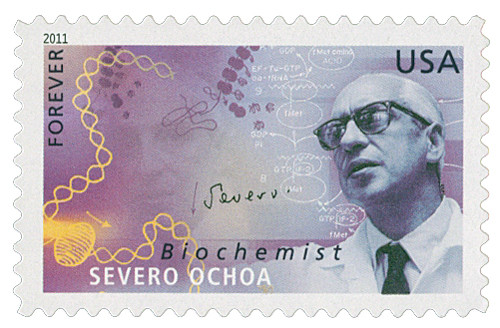
# 4543 - 2011 First-Class Forever Stamp - American Scientists: Maria G May
U.S. #4543
2011 44¢ Maria G. Mayer
American Scientists
Issue Date: June 16, 2011
City: St. Paul, MN
Quantity: 30,000,000
Printed By: Banknote Corporation of America, Sennett Security Products
Printing Method: Offset
Color: multicolored
M aria Goeppert Mayer was discussing difficulties in her research on atomic structure with famed colleague Enrico Fermi one day. As Fermi left her office, he paused and asked, “Incidentally, is there any evidence of spin-orbit coupling?” It was the connection Goeppert Mayer needed for research that eventually earned her the Nobel Prize. “When he said it, it all fell into place. In 10 minutes I knew… I finished my computations that night. Fermi taught it to his class the next week,” said Goeppert Mayer. Her work focused on the “nuclear shell model,” an explanation of how protons and neutrons are arranged in an atomic nucleus. Spin-orbit coupling refers to how objects with different motions are connected (like how the Earth revolves on its axis even as it rotates around the Sun). Goeppert Mayer was able to connect it to her work and finally account for the odd behavior of atoms called the “magic numbers.” Goeppert Mayer delayed publishing her results as a courtesy to other scientists working in the same area. She later worked with one, J.H.D. Jensen of Germany, to publish Elementary Theory of Nuclear Shell Structure in 1955. Their work earned them the Nobel Prize in 1963, making Goeppert Mayer just the second woman to win a Nobel for physics.
U.S. #4543
2011 44¢ Maria G. Mayer
American Scientists
Issue Date: June 16, 2011
City: St. Paul, MN
Quantity: 30,000,000
Printed By: Banknote Corporation of America, Sennett Security Products
Printing Method: Offset
Color: multicolored
M aria Goeppert Mayer was discussing difficulties in her research on atomic structure with famed colleague Enrico Fermi one day. As Fermi left her office, he paused and asked, “Incidentally, is there any evidence of spin-orbit coupling?” It was the connection Goeppert Mayer needed for research that eventually earned her the Nobel Prize. “When he said it, it all fell into place. In 10 minutes I knew… I finished my computations that night. Fermi taught it to his class the next week,” said Goeppert Mayer. Her work focused on the “nuclear shell model,” an explanation of how protons and neutrons are arranged in an atomic nucleus. Spin-orbit coupling refers to how objects with different motions are connected (like how the Earth revolves on its axis even as it rotates around the Sun). Goeppert Mayer was able to connect it to her work and finally account for the odd behavior of atoms called the “magic numbers.” Goeppert Mayer delayed publishing her results as a courtesy to other scientists working in the same area. She later worked with one, J.H.D. Jensen of Germany, to publish Elementary Theory of Nuclear Shell Structure in 1955. Their work earned them the Nobel Prize in 1963, making Goeppert Mayer just the second woman to win a Nobel for physics.









